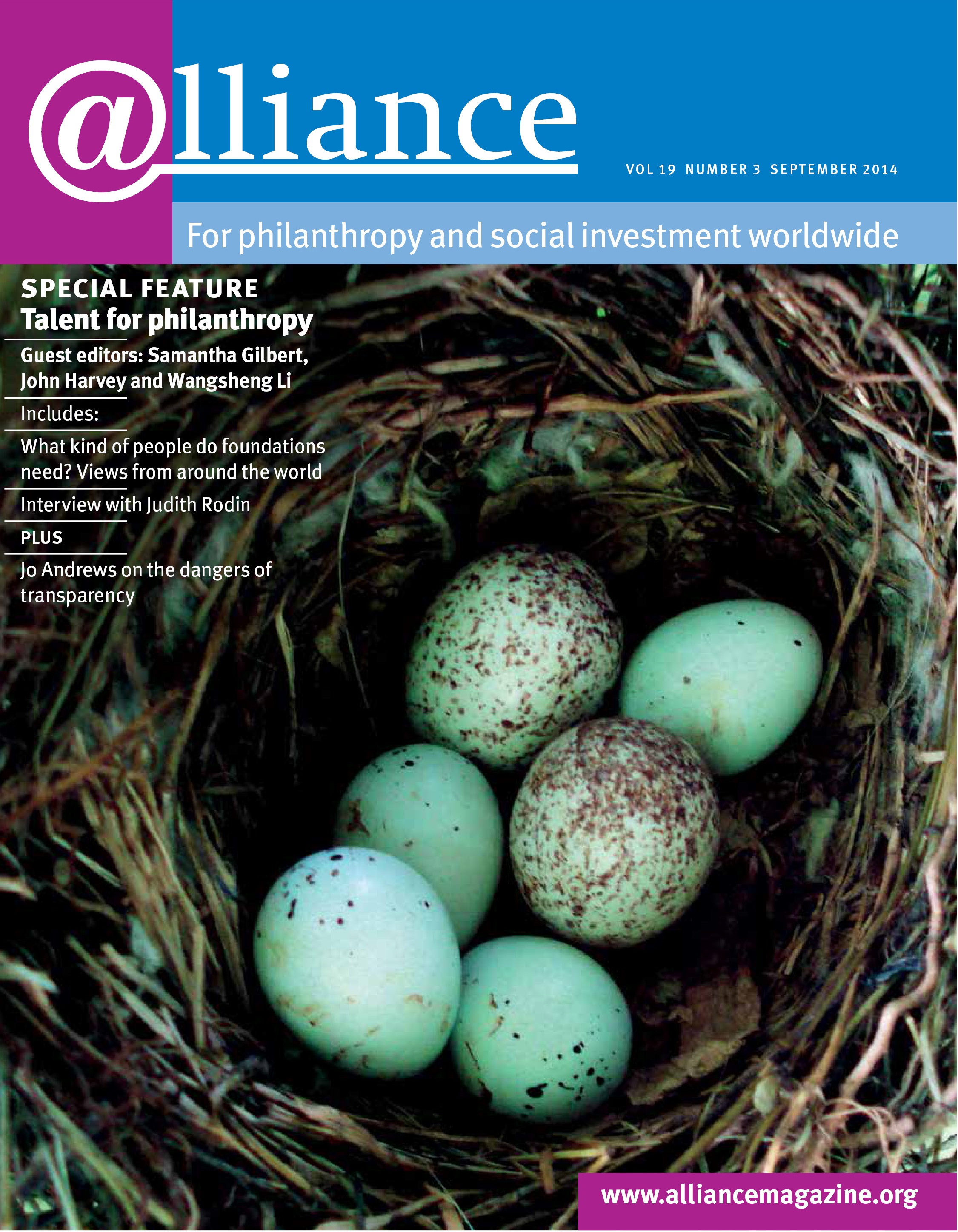In recent years there has been much discussion of foundations’ role in supporting very new organizations or those needing additional help for various reasons. The venture philanthropist supports what exists and is generally keen to avoid appearing to set the agenda. But what happens when there is no existing organization capable of delivering what the foundation seeks to achieve?
The idea of a foundation creating a new organization may be anathema to some in the sector. The job of foundations, they might argue, is to respond to grant applications or find existing organizations to carry out a specific goal. Grantmaking foundations often stress that they don’t impose their values and goals. Grantmaking to existing organizations not only allows foundations to appear ‘democratic’ but also enables them to avoid long-term responsibility for an organization: the foundation is not mother, father or midwife but a kindly, rich aunt or uncle who helps out when needed. One problem with the ‘kind aunt’ approach is that it restricts the foundation to doing what existing organizations already do. That may be fine in a non-profit market perfectly attuned to need (if any such exists), but it may be overly restrictive in less developed non-profit environments or those that do not adequately reflect needs and/or new thinking.
Organizational creation does happen, but, perhaps partly because of foundations’ reticence in admitting to it, it is difficult to see how widespread the practice is or what the challenges and obstacles are. A recent study [1] looks at nine examples of foundations creating wholly new organizations in eight countries across Europe with very differently developed non-profit sectors. While the study was restricted to Europe, the findings are arguably of much wider relevance.
The study highlights the fact that foundations are well positioned to act as institutional entrepreneurs. They have knowledge, broad networks and resources. They are not so ‘embedded’ that they cannot imagine new ideas, but sufficiently embedded to acquire resources and open doors to put new ideas into practice. Considering what is needed versus what is on offer can be instructive both in identifying needs and in assessing other applications.
Foundations give four main reasons for creating an independent organization (rather than a new programme within the foundation):
- hope that the new organization will attract other funders;
- hope that the organization will have its own independent reputation and legitimacy;
- avoiding longer-term commitment from the foundation, and/or the appearance of additional operational costs;
- avoiding overtly imposing an agenda.
But there are also challenges for the foundation wanting to act as an institutional entrepreneur. Fear of ‘ending up with the bill forever’ is a significant reason for not creating something new. Sustainability of the new organization and foundation exit tend to be high on foundations’ agenda from the start.
Overcoming the liabilities of newness is challenging. Trustees have to back something unknown. One way of overcoming these problems is to create and test a model within the foundation itself or in some other established organization. Hosting (providing back-office services) is another approach. With some exceptions, foundations avoided naming the new venture after themselves. Early involvement of partners is seen as encouraging wider ‘ownership’ of the new organization and reducing the danger of its being seen as ‘X foundation’s baby’. But involving partners also has costs in terms of loss of control and often a slower timetable.
Finding the right staff and board members is crucial to the likely success of the new organization. This is often more difficult than anticipated, especially where a venture is truly innovative in re-combining skills and concepts and/or where the skills required to do the work are not accompanied by the managerial skills to sustain the fledgling organization. Building sound infrastructure for the new organization was emphasized but again requires investment now for results that are not immediately apparent.
Time and patience are other major challenges. Foundations that engage in ‘DIY’ do not have the luxury of hypothetical timetables. Exit is generally planned and built in from the start but foundations admitted that, in reality, the precise timing and nature of exit, and the total budget, are negotiable: new organizations are like children with their own ages and stages. Set cut-off dates and fixed budgets are for books, not real life.
1 Diana Leat (2014) The Inventive Foundation: Creating new ventures in Europe.
Diana Leat is a philanthropy consultant. Email d.leat@hotmail.com







Comments (0)